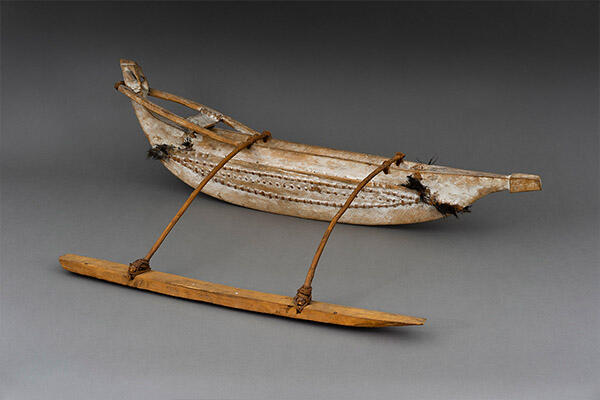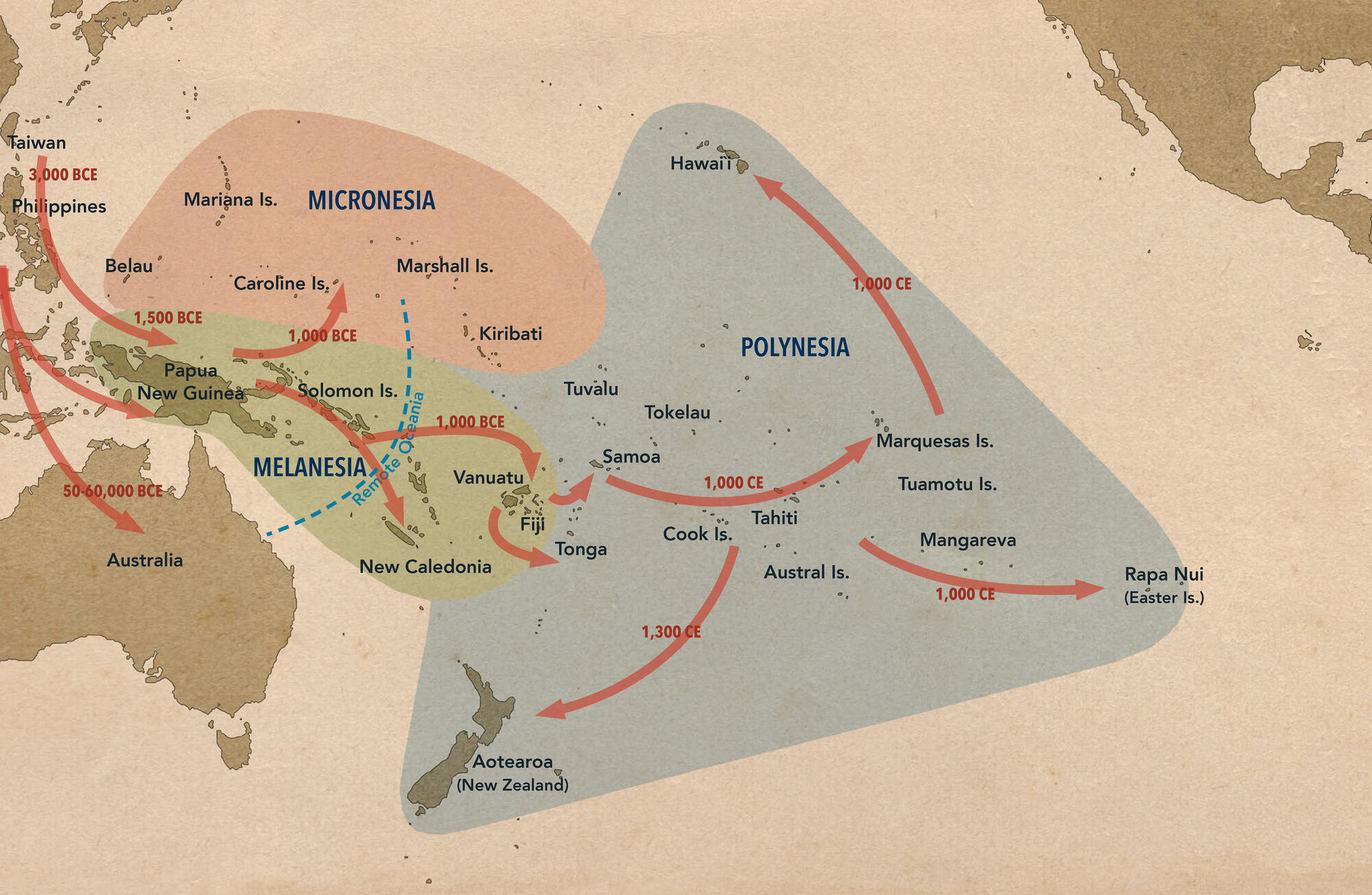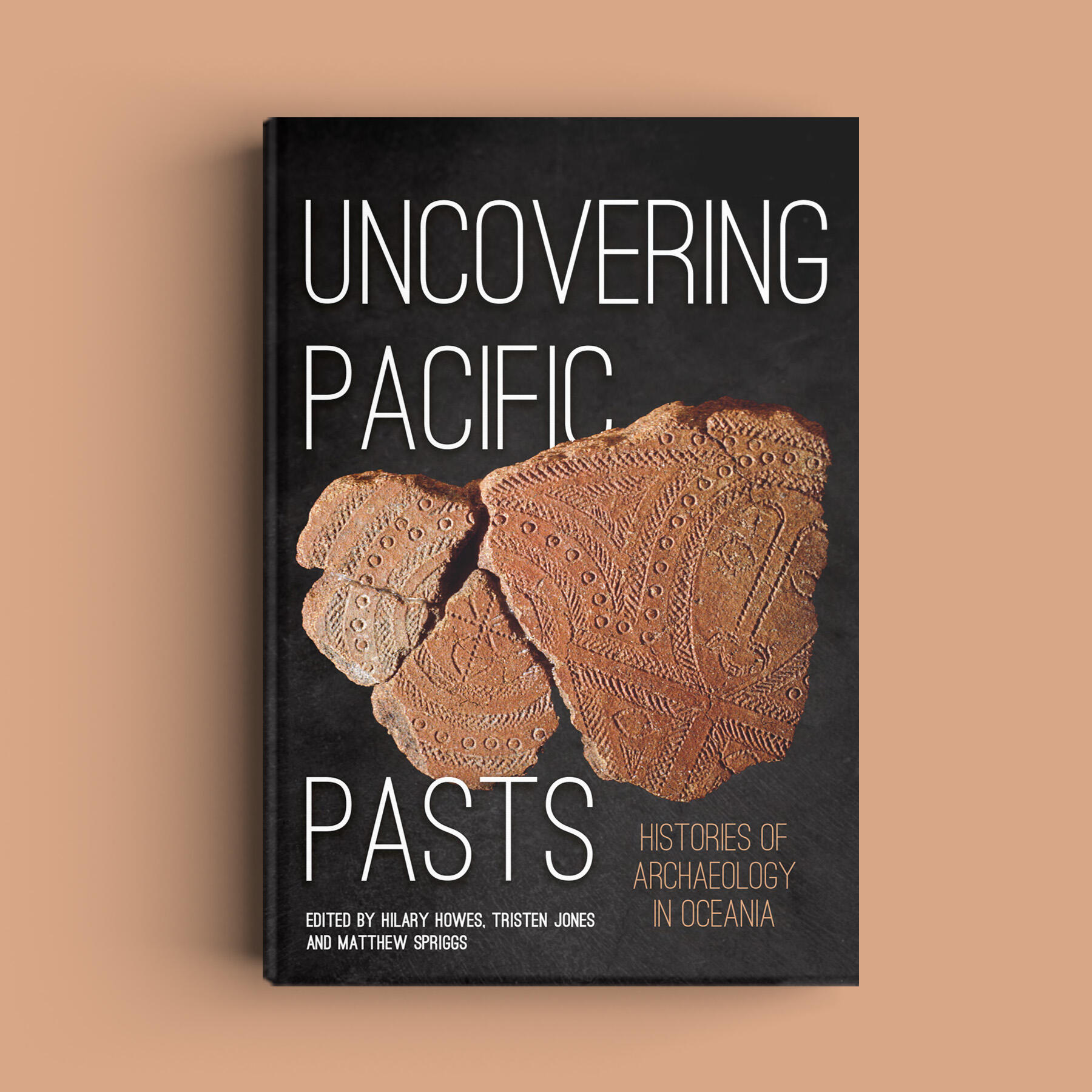


Explore the role of Harvard scholars in the development of anthropology in the Pacific

|
Ongoing exhibitionThis exhibit, which opened in March 2020, explores how early Harvard scholars influenced the development of anthropology and archaeology in the Pacific region. Produced in collaboration with over thirty other museums around the world, Harvard’s contributing exhibit features historical images and objects from the Peabody collections, including intricately carved Fijian clubs, models of distinctive Pacific outriggers, and a striking example of Samoan bark cloth (siapo). Together they weave a compelling narrative about the ideas, people, and networks pivotal to both early understandings and ongoing studies of Oceania. |
|
Over thirty institutions worldwide will offer Uncovering Pacific Pasts exhibits, including five in the United States. All were targeted to open in early March 2020. The Peabody Museum’s contribution is the only Uncovering Pacific Pasts exhibit in New England. All of the Uncovering Pacific Pasts exhibits are part of the Collective Biography of Archaeology in the Pacific (CBAP) Project, an Australian Research Council (ARC)-funded Laureate research program based in the School of Archaeology and Anthropology, College of Arts and Social Sciences at The Australian National University in Canberra, Australia. |
|
|
|
The Peabody Museum collections from Oceania—comprising the islands of the North and South Pacific and Australia—are extensive and include many rare eighteenth-century items collected by Boston merchants, traders, explorers, and researchers on Pacific voyages dating back to the late-eighteenth century. |
Top: Puluta club from the Massim cultural region of the Trobriand Islands off of New Guinea. Gift of Alexander Agassiz, 1896, 96-25-70/49430.2. Above: Model of an Outrigger Canoe (vaka) Tatakoto Atoll, French Polynesia. Gift of Alexander Agassiz, 1905, 05-2-70/64866. Samoan bark cloth (siapo) Collected in Fiji, c. 1911. Gift of Dr. R. B. Dixon, 1912, 12-31-70/84109. Wooden war club (sali) from Fiji, pre-1860 (Gift of the Museum of Science, Boston, 1961, 61-8-70/3935.
"Of the different people inhabiting the Oceanic islands, we are naturally led to ask—what was their origin? How are they connected with the population of either of the two continents between which they are situated?"
—John Pickering, 1836
As early as the eighteenth century, voyagers and scholars were puzzled by how the most remote islands of Oceania were populated. Over the centuries, this mystery spawned many theories about the origins of Indigenous Pacific peoples and has influenced the development of archaeology and anthropology. By tracing this intellectual history, the museum strives today to be a space to uncover and counter racially infused narratives.
While Harvard’s Peabody Museum was founded to investigate the origins of Indigenous people in the Americas, some of the museum’s earliest and largest collections were acquired through New England’s eighteenth- and nineteenth-century seafaring trade and early scientific expeditions. These collections were crucial to early scholarly interest in the peoples of the Pacific. Using a selection of these cultural belongings, this exhibit explores several of Harvard’s early moments and scholars notable in the formation of Oceanic anthropology. Many of these early scholars, such as Roland Dixon—one of the first and founding professors of anthropology at Harvard—held inadequate ideas of race, origins, and migration, which continue to influence ongoing debates today.

"In most branches of knowledge that are pursued in Harvard University, laboratories, museums, and libraries are the outgrowth of teaching and research. In anthropology, the order is reversed."
—Roland Dixon 1930
During the advent of modern anthropology in the late-19th and early-20th centuries, archaeology and physical anthropology methodologies were in their infancy. At the time, scholars relied heavily upon comparative ethnology—evaluating material culture and languages—to formulate theories on the origins and migrations of the human race. Although these theories were sometimes flawed, they formed the foundation for early Harvard perspectives on Oceanic peoples.
Between 1838 and 1842, the U.S. Exploring Expedition conducted surveys of the Pacific Ocean and its bordering lands. The expedition collected materials there were used to inform scholarly perspectives on human racial origins. Harvard graduates Charles Pickering and Horatio Hale both traveled as part of this unprecedented voyage. Pickering developed a novel anthropological approach that combined Hale’s linguistic knowledge with his own understanding of natural history, Indigenous knowledge, and other cultural objects to develop theories about the migration of peoples around the world.
Decades after the U.S. Exploring Expedition, Roland B. Dixon graduated from Harvard (1900), becoming the sixth person to receive a doctorate in anthropology in the United States. As with most early Harvard scholars, Dixon’s studies initially focused on Native American communities in North America. He also worked for famed anthropologist Franz Boas investigating trans-Pacific human migration across the Bering Strait and the origin of the New World’s Indigenous peoples. Dixon later became a full professor at Harvard and Curator of Ethnology at the Peabody Museum, authoring several significant—yet controversial—books that attempted to trace the migration of peoples and ideas across the globe. Ultimately, he turned his attention to the international debate on the “problem of Polynesian origins,” inserting himself—and Harvard—into what he called the “fertile and fascinating” field of Oceanic anthropology.
Jepelpel in ke ejukāān
"Despite the vastness of the ocean, the unified spirit of its people stands tall and firm like a coconut tree."
—Proverb from the Marshall Islands
Objects have many stories to tell: who makes them; who used them; and who traded them. This exhibit focuses on the ways that Harvard collectors and scholars have interpreted and reinterpreted cultural objects to develop theories about the settlement of the Oceanic region. However, for those who call Oceania home—whose ancestors created these objects, and whose bodies themselves were the object of study—these collections and collectors evoke stories of a different kind. Hear five Indigenous scholars from Fiji, American Samoa, Australia, and the Trobriand Islands discuss the significance of the objects displayed in this exhibit from their perspectives.
 Uncovering Pacific Pasts: Histories of Archaeology in Oceania (ANU Press, 2022)
Uncovering Pacific Pasts: Histories of Archaeology in Oceania (ANU Press, 2022)
All ANU Press titles are freely available online through open access publishing. Download the free book.
Objects have many stories to tell. The stories of their makers and their uses. Stories of exchange, acquisition, display and interpretation. This book is a collection of essays highlighting some of the collections, and their object biographies, that were displayed in the Uncovering Pacific Pasts: Histories of Archaeology in Oceania (UPP) exhibition. The exhibition, which opened on March 1, 2020, sought to bring together both notable and relatively unknown Pacific material culture and archival collections from around the globe, displaying them simultaneously in their home institutions and linked online at www.uncoveringpacificpasts.org. Thirty‑eight collecting institutions participated in UPP, including major collecting institutions in the United Kingdom, continental Europe and the Americas, as well as collecting institutions from across the Pacific.
The book includes two chapters focused on Harvard’s collections: one by Tristen Jones and Peabody Museum Curator of Oceanic Collections Ingrid Ahlgren about Harvard professor Roland Dixon and another chapter by William Scates Frances about Harvard professor and Peabody Museum curator Charles Pickering.